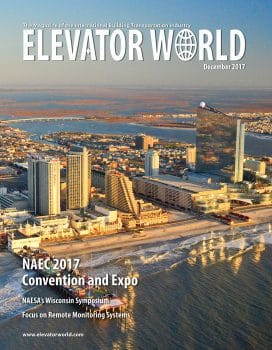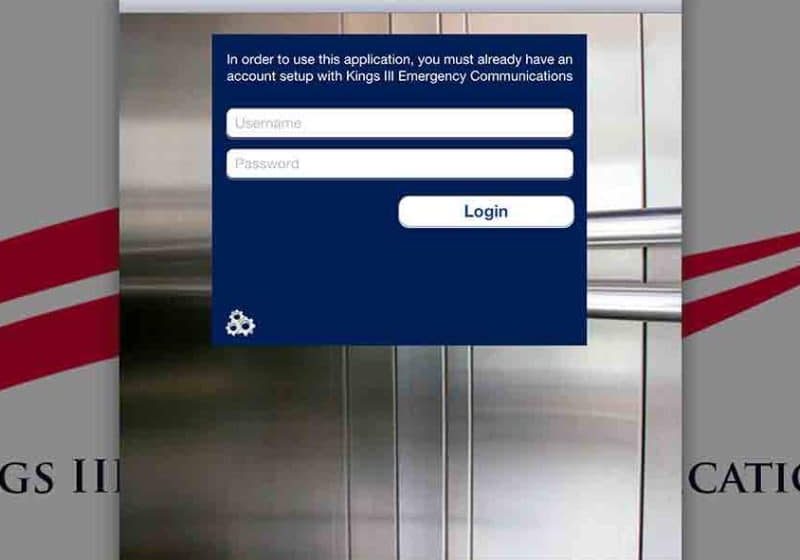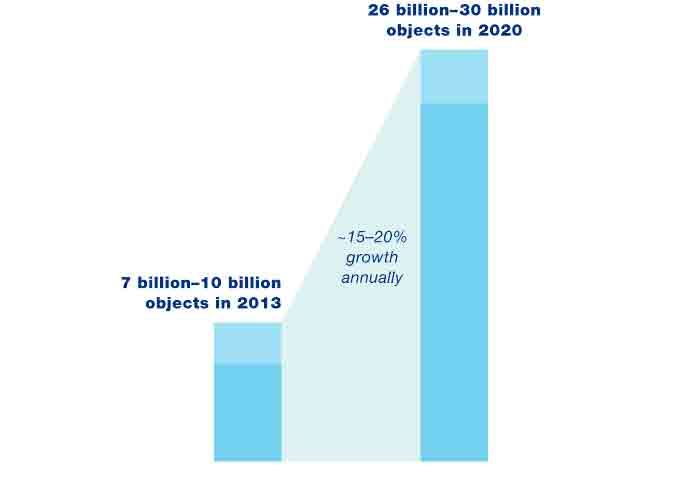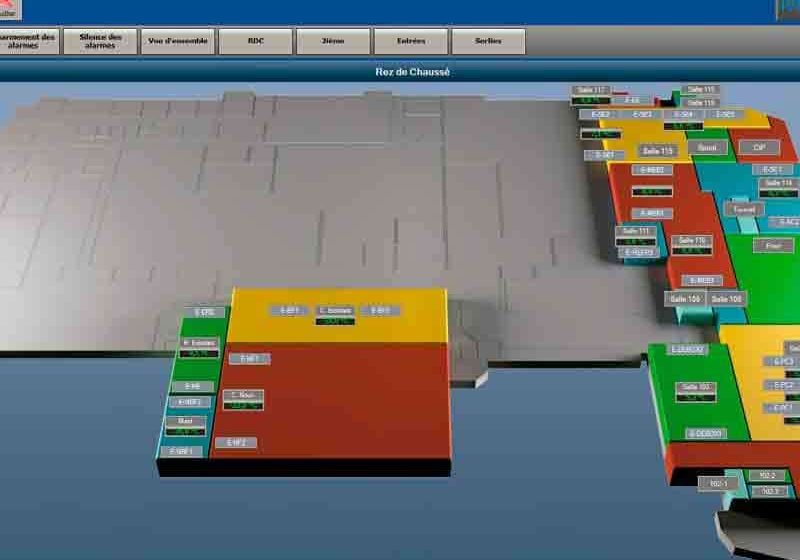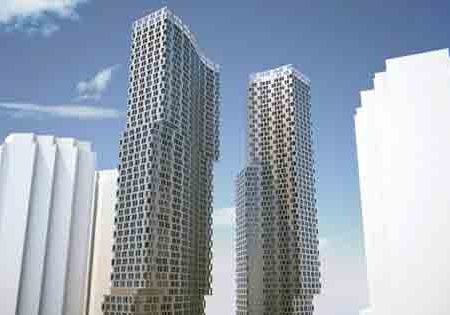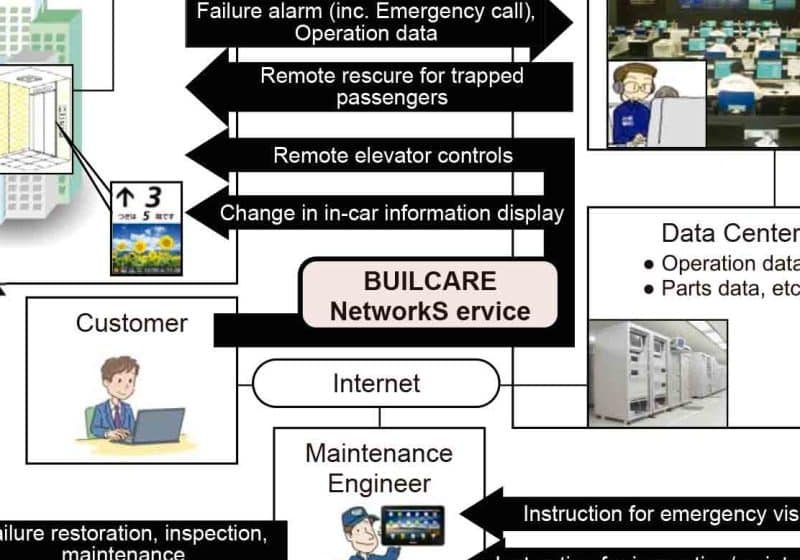Northampton Gathering Does It Again
Dec 1, 2017

Seventh Symposium on Lift and Escalator Technologies delivers event’s usual high level of interaction and information.
photos by Peters Research Ltd.
I opened my report in 2016 on the Sixth Symposium on Lift and Escalator Technologies with the statement, “I know I sound like a cracked record, but this event just gets better year by year!” While this may have set high expectations for this year’s event, readers won’t be disappointed to hear that the 2017 symposium hit the mark in every way yet again. There were more delegates and a greater international presence, and even more of a buzz in the air. The event, held again this year at the Highgate House Conference Centre & Hotel in Northampton, U.K., now has to be regarded as the best educational symposium for the lift and escalator industry globally, and it is so good to see it doing so well. Clearly, the two key factors to its success are that it is an incredibly good value, and the quality of the papers presented here is so high.
Delegates came from all around the globe, representing 16 countries and drawing an audience of more than 125. The symposium is also supported by a small exhibition from the industry, including components suppliers, control-panel manufacturers and the University of Northampton (UoN, a co-organizer with the CIBSE Lifts Group and the Lift and Escalator Industry Association [LEIA]).
John Sinclair, associate dean from the Faculty of Arts, Science and Technology (FAST) at UoN, opened the event with Nick Mellor, managing director of LEIA of the U.K. Sinclair expressed his delight that the partnership made up of UoN, LEIA and the Chartered Institution of Building Services Engineers (CIBSE) continued to work together to stage this internationally known event. Mellor made a compelling introduction and referred to the possible impact the June 14 Grenfell Tower fire might have on our industry going forward.
The first session was on standards and chaired by your author. Dr. Rory Smith opened the session with a paper about EN 81-77 and lifts subject to seismic conditions. This was followed by Dennis Major talking about EN 81-20/-50 being a key driver for innovation in the next generation of lifts. Adam Scott then entertained us with a very interesting talk about the new EN 81-70 and important changes to the standard that will affect us all. In the future, this paper will need to be expanded, as there is so much to cover. A change to the planned program then followed, with Roger Howkins very kindly stepping in to talk about lift modernization challenges. In all the years I have known him, Howkins has always held a belief that standards and industry publications do not do the art of modernization sufficient justice.
The delegates retired for coffee and conversation before the second session chaired by Scott, who is past chairman of the CIBSE Lifts Group. Scott lost his record of opening the first session this year, but tradition was maintained, with the second session focused on traffic. Four papers were presented covering departure delays, lift planning and selection graphs, creating passenger batches for simulation, and the passenger transfer efficiency coefficient for double-deck elevators. The papers were presented by four very good speakers in Stefan Gerstenmeyer, Mirko Ruokoski, Dr. Lutfi Al-Sharif and Dr. Richard Peters. Al-Sharif has been made a visiting professor at UoN and gave his inaugural lecture the evening before the symposium. This is a very well-deserved appointment, as he has, for many years, been one of the most entertaining speakers at our symposiums.
Next came lunchtime, but your author had to take on a far more important task before tucking into the excellent food provided by the Highgate House — probably the most stressful part of the symposium for me. I was given the unenviable task of ensuring that Dr. Gina Barney turned up for the group photo! I am sure that others reading this report will realize that dealing with a Wandering Barney is quite challenging.
After lunch, the delegates returned to a session about technology and equipment. The session was chaired by Phil Hofer. Hofer is based in Asia, and is playing a vital role in the Hong Kong symposium, being held on May 15, 2018. Adrian Godwin opened the session with a paper on the future of vertical transportation for tall buildings. Godwin presented an early design of a possible solution that appeared to be based on a paternoster. Aleksey Gorilovsky followed, with a paper entitled, “Analysis of New Lift Topology with Visual Stimulation of Passengers.” We were then entertained by the most pragmatic paper of the whole event, presented by Julia Munday. It could have been entitled “Say It as You See It,” but it wouldn’t have got past the scrutineers, so “Some Thoughts on Rope Life” was a completely appropriate title.
After coffee, we returned to the room for a session on seismic engineering. It was completely appropriate, given that, within the preceding 24 hours, earthquakes had been experienced in both Mexico and New Zealand. The session was chaired by Barney and included three fascinating papers by Dr. Asami Ishii, Dr. Stefan Kaczmarczyk and Hiroya Tanaka. We are truly fortunate that we in the U.K. do not experience the problems caused by earthquakes.
The final session of the day was chaired by Len Halsey and entitled “History.” Your author opened with a paper entitled “The History of the Safety Gear From 1851 to the Present Day” and posed some serious questions. Dr. Lee Gray then presented a paper on the history of lift traffic analysis, 1890-1960. Gray had collaborated with the final speaker of the day, Barney, who followed with a history of traffic analysis from 1960. She ended her paper with a long list of acknowledgements, backed by a song and dance video.
The room was then cleared to make way for the conference dinner. One of the reasons we keep going back to the same venue is the excellent food and service, and this year’s dinner did not disappoint. Then, it was only a few steps to the bar, where the networking continued. I think I can safely say that the first day was a huge success, and that everyone went to the bar looking forward to day two!
The first of three sessions for the second day was chaired by Al-Sharif and covered energy and engineering. This was a five-speaker session that began with Jonas Missler covering control of actuators for cabin vibration damping of a rope-free passenger transportation system. Next was Benjamin Watson, who delivered a paper entitled “Lift Energy Efficiency Standards and Motor Efficiency.” Dr. Gabriela Roivainen followed with a very interesting paper about in-car noise computation for a high-rise lift, and Dr. Nishant Singh presented on an analysis of airflow effects in lift systems deployed in the modern built environment. The final paper of the session was entitled “Energy Saving Through the Application of Variable Speed Technology” delivered by Stephane Reau.
Coffee was, once again, gratefully received, after which Dr. Benedikt Meier chaired a session on education, research and learning. Thomas Ehrl presented a paper about the improvement of the learning environment in an international multicultural company, and was followed by Undine Stricker-Berghoff, who presented her paper, “Women in the Lift Industry in Europe.” The final presentation of the session was a workshop led by Smith and Kaczmarczyk, which looked at a systems engineering approach to bridge the gap between the theory and industrial practice.
The final session of the two days was chaired by Gray and was entitled “Safety.” This was a four-paper session, which continued with a fascinating paper on buffer performance by Dr. Osamu Furuya. Michael Bottomley followed with a paper about the movement of hazardous substances in lifts, which proved most useful. He was followed by Keisuke Minagawa, who offered a paper about a health monitoring system for ropes, an area where, in my opinion, our industry’s practices lag behind many other industries. This session also included a paper from the first day about why PESSRAL is not PESS, presented by Tijmen Molema.
The Ninth Symposium on Lift and Escalator Technologies will be held on September 19-20, 2018, at Highgate House, but will be preceded by the aforementioned eighth symposium in Hong Kong, which will supplement the usual September event in Northampton. Papers have already been proposed, and if you would like to offer a paper for either of the 2018 events, visit www.liftsymposium.org. You can also visit the website to download any papers from past years of the symposium.
Get more of Elevator World. Sign up for our free e-newsletter.

